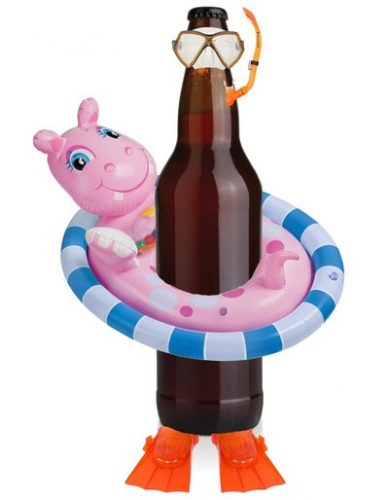
A muted chorus of flip-flops drags across pavement on a sweltering spring day, as scantily clad coeds make a pilgrimage toward the river, inner tubes draped like bandoleers. Gotta keep those hands free for important things, like beer.
Yes, you can drink on any river in Oregon, but as to whether you should … well, as in many things, moderation is key.
Legally, first you must mind the composition of your “tube.” Any multi-chambered craft — as in it has a bottom, or is two or more tubes tied together — is subject to boating regulations. That means no drinking, as well as the required carrying of a personal floatation device (PFD) and whistle. In all honesty, wearing a PFD is not a bad idea when tubing in general.
Fire department personnel monitor put-ins to assure people have the right equipment. Take that as an act of grace, not an intrusion. It beats a citation from a sheriff’s deputy when you land.
While afloat, you’re likely to be left to your own devices. Few tubers actually commit to getting hammered on the river; most say it’s too damn hot to be getting plumb inebriated and the dangers diminish when you’re not trying to prove something.
Amanda Craig, a 20-something Eugenean, has tubed the Willamette River a dozen times with friends. “Every time I’ve gone, we were drinking,” she says, “but I’ve never seen anyone have an accident because of it.”
Craig says people stick to a couple-few beers because there are dodgy moments, like shallow spots full of sharp rocks or the boat lane/bypass at Interstate-5, where debris can cause invisible hazards. “Going through that route, you can’t be wasted and make it,” she says.
The Willamette, in general, is tame compared to the McKenzie River. “We were on a faster part of the McKenzie,” says UO senior Will Kanellos, “and we got caught on a submerged tree.” Kanellos had to stand up on the tree, water rushing past, and untangle several tubes that were tied together. “My girlfriend fell out,” he recalls. “It was scary, but we got through it with just a few scratches.” Kanellos only had a couple beers, and he says if he’d had a few more, things might have gone awry.
Joe Zaludek, Deputy Chief of Special Operations for the Eugene-Springfield Fire Department, supervises the Water Rescue Team. Zaludek says half of river rescues involve alcohol. Near Island Park in Springfield, he says, “I pulled a guy out who fell from his tube. He popped off and sunk like a stone. He was impaired and couldn’t swim. His friends saw him go down, but it was too late.”
Zaludek cites high water level at a rapids and lack of a PFD as critical factors in this fatal accident. Temperature, he says, is also dangerous. On May 1, when air temperatures reached 86 degrees, the water was only 48 degrees — cold enough to cause hypothermia, which is easily compounded by intoxication.
There is still a consensus, however, among those who enjoy the float: If you use your head and look out for each other, warnings need not deprive you of pleasure. “I think it’s something that everyone who lives in Eugene should try at least once,” Craig says. “It’s definitely worth it.”
Typical Routes:
Willamette: Island Park in Springfield to around Ferry St. Bridge in Eugene
McKenzie: Hayden Bridge in Springfield to Harvest Landing in Springfield
Area water readings:
Temperature (US Geological Survey) goo.gl/OzngqK
Depth (National Weather Service) goo.gl/UzccJX